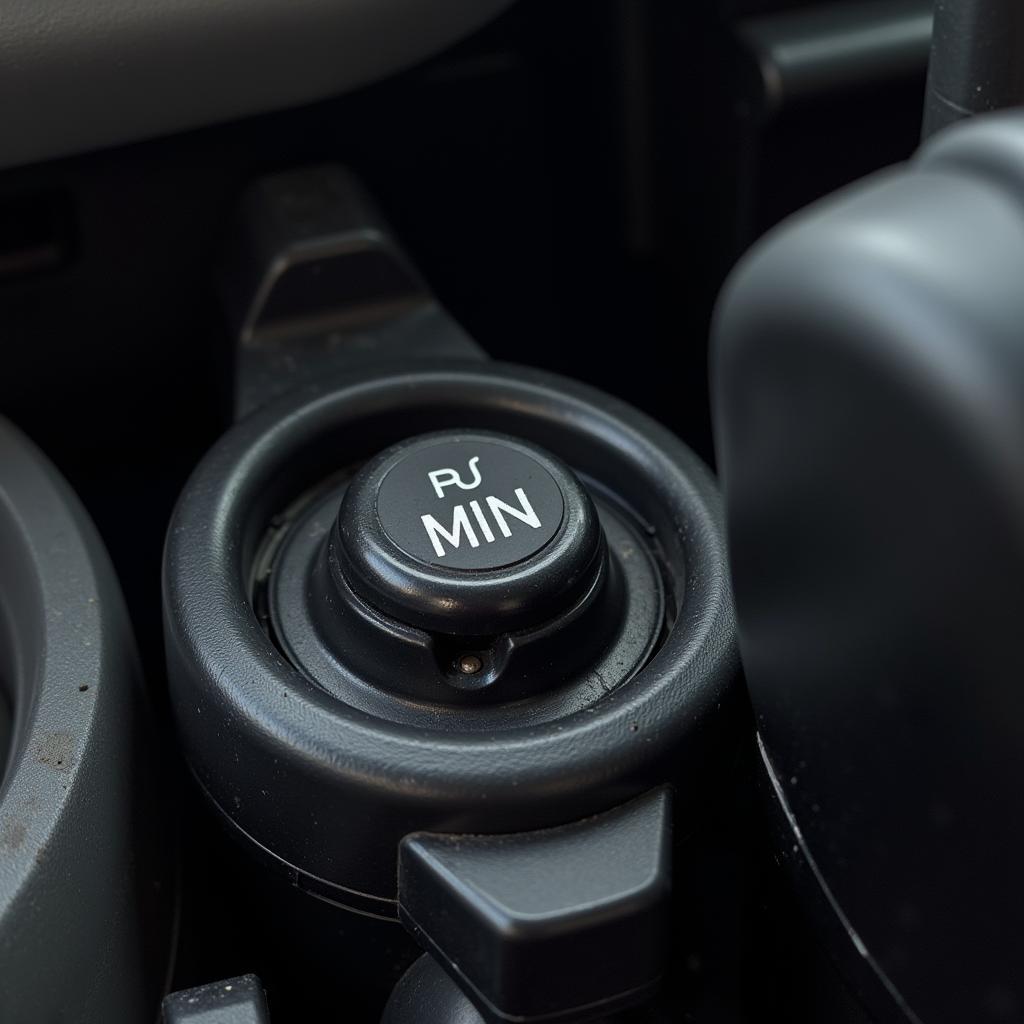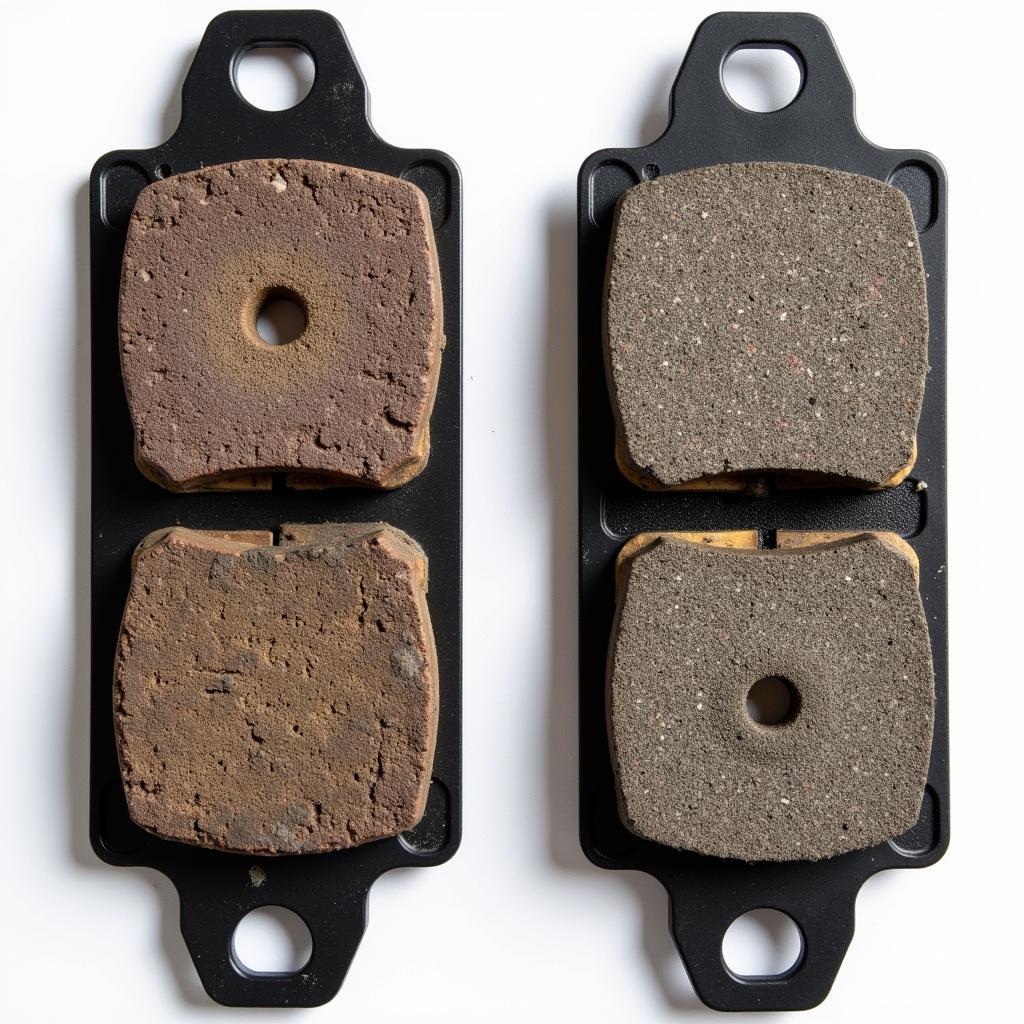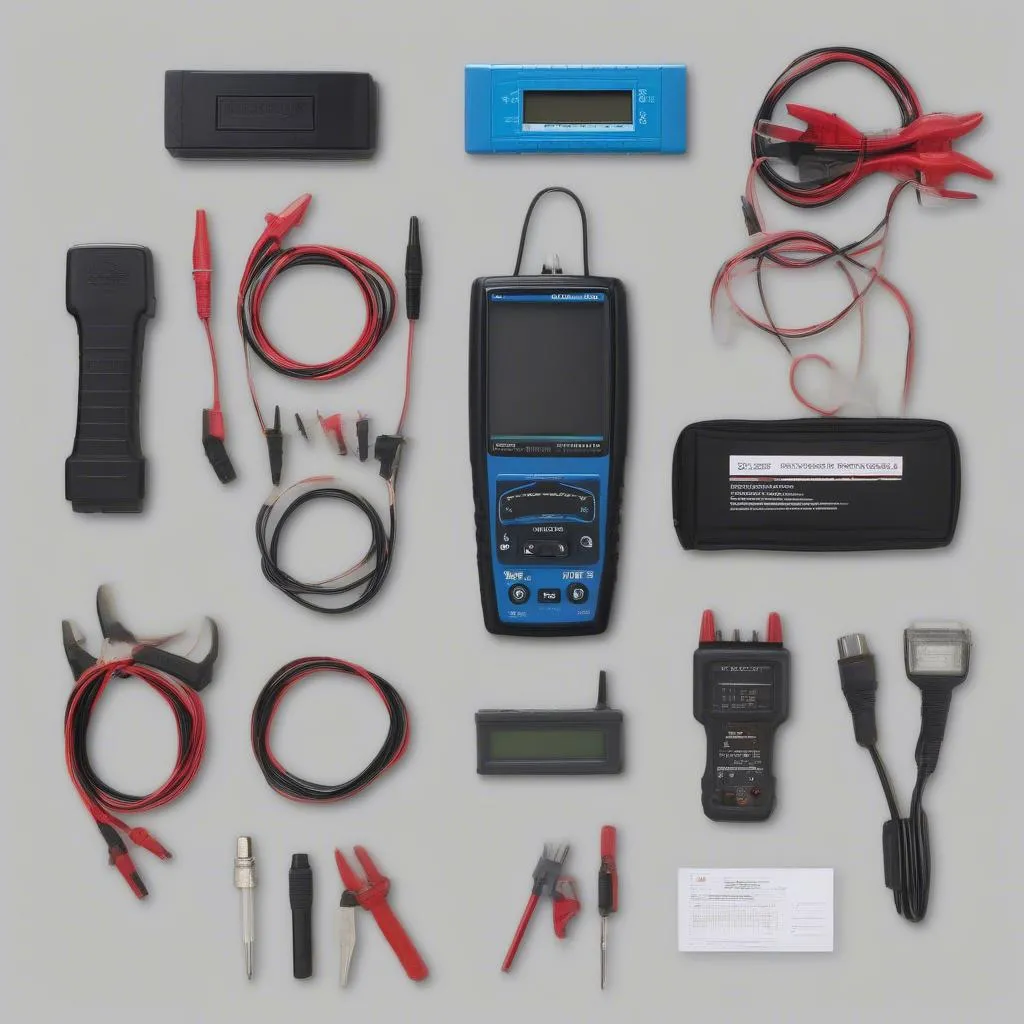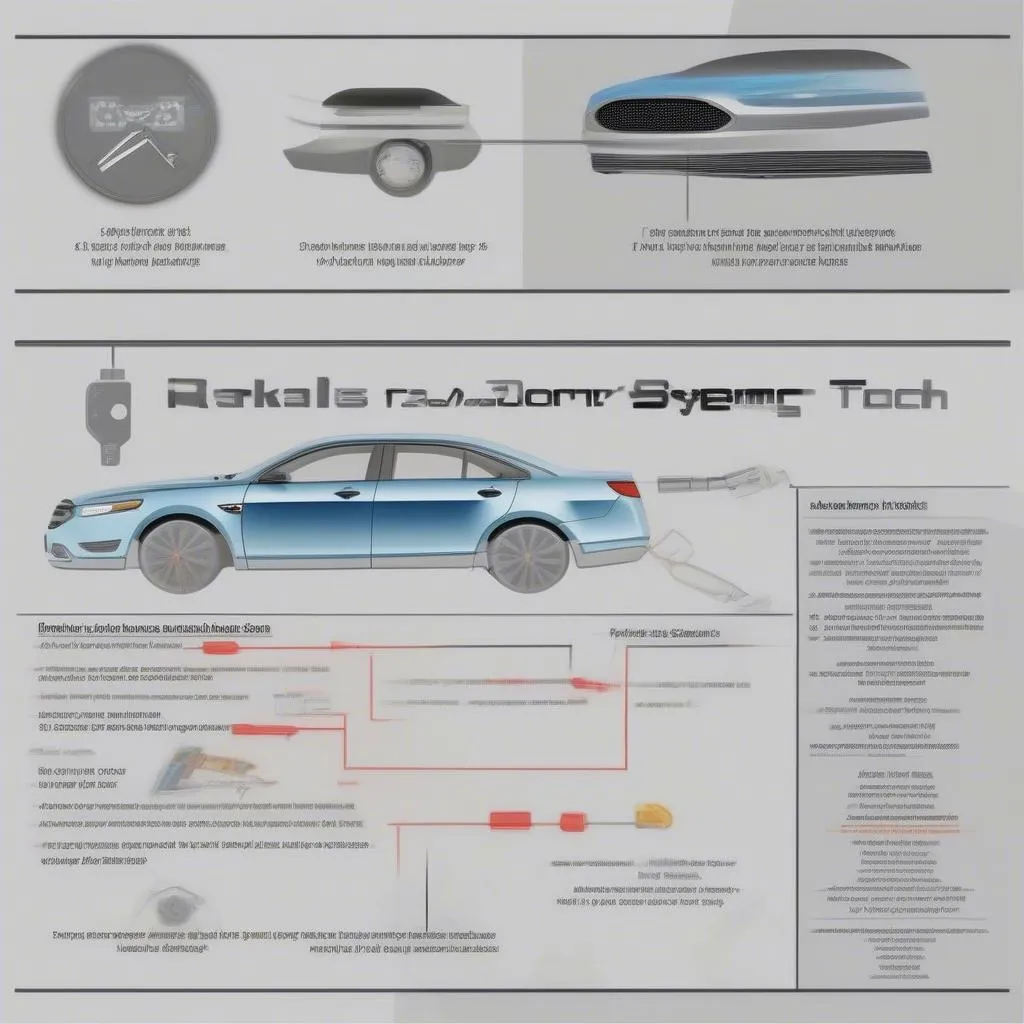The brake system warning light on your dashboard is a crucial safety feature, designed to illuminate when it detects a problem within your vehicle’s braking system. Ignoring this warning could lead to dangerous driving conditions and potential accidents. Understanding what triggers this light is essential for every driver.
Common Reasons Your Brake Warning Light Turns On
While this article focuses on software-related brake issues, it’s vital to understand all potential culprits behind a glowing brake warning light. Here’s a breakdown:
1. Low Brake Fluid Level: This is one of the most frequent causes. Brake fluid, responsible for transmitting force when you press the brake pedal, can decrease over time due to leaks or worn brake pads.
 Low Brake Fluid Reservoir
Low Brake Fluid Reservoir
2. Worn Brake Pads: Brake pads are designed to wear down gradually with use. When they become too thin, a sensor embedded within the pad triggers the warning light, signaling it’s time for a replacement.
 Worn Brake Pads Comparison
Worn Brake Pads Comparison
3. ABS Issues: The Anti-lock Braking System (ABS) prevents wheel locking during hard braking. A malfunction within this system, often indicated by an additional ABS warning light, can trigger the general brake warning light as well.
4. Brake Light Malfunction: While less common, a faulty brake light switch or blown fuse can also illuminate the brake warning light. This indicates your brake lights might not be engaging properly, posing a risk to you and other drivers.
Software-Related Brake System Issues
Modern vehicles heavily rely on software for optimal brake system performance. Malfunctions within this software can lead to unexpected brake system issues and trigger the warning light.
1. Electronic Brake Distribution Problems: Today’s vehicles often feature Electronic Brake Distribution (EBD), a system that optimizes braking force to each wheel based on factors like weight distribution and road conditions. Software glitches within the EBD can lead to uneven braking or reduced braking efficiency, triggering the warning light.
2. Electronic Stability Control Errors: Similar to EBD, the Electronic Stability Control (ESC) system utilizes software to maintain vehicle stability during cornering or slippery conditions. Software errors in the ESC can impact braking performance and illuminate the warning light.
3. Software Conflicts: As vehicles become increasingly reliant on software updates for various systems, conflicts can arise between different software versions, potentially affecting brake system functionality.
Diagnosing and Addressing Software-Related Brake Issues
Pinpointing the exact cause of a software-related brake problem often requires specialized diagnostic tools and expertise.
“Modern vehicles are complex systems,” says automotive electronics expert, Dr. Emily Carter. “A simple software glitch can have cascading effects on seemingly unrelated components like the braking system. Professional diagnostics are crucial for identifying and rectifying these issues.”
Remote Diagnostics and Programming: Thankfully, advancements in automotive technology have paved the way for remote diagnostics and software solutions. Many modern vehicles allow technicians to access the vehicle’s computer system remotely, diagnose software issues, and even upload software patches or updates wirelessly.
This eliminates the need for physical visits in many cases and provides a convenient solution for addressing software-related brake problems.
What to Do When Your Brake Warning Light Comes On
- Don’t Panic: While the warning light signals a potential issue, it doesn’t necessarily mean immediate danger.
- Assess the Situation: If possible, safely pull over and check your brake fluid level. If it’s low, adding brake fluid might temporarily address the issue. However, it’s crucial to seek professional inspection to identify the underlying cause of the low fluid level.
- Seek Professional Help: For any persistent warning light, unusual brake behavior, or suspected software issues, it’s best to consult a qualified mechanic specializing in automotive electronics.
Ignoring a brake warning light can lead to more severe problems and compromise your safety. With remote diagnostics and software solutions becoming increasingly prevalent, addressing these issues has become more convenient and efficient than ever.
FAQs
1. Can I drive with the brake warning light on?
It’s highly discouraged. While short distances might be possible, driving with a potential brake issue poses a significant safety risk.
2. How often should I check my brake fluid?
It’s recommended to check your brake fluid level at least once a month and have your brake system inspected annually by a professional.
3. Are software updates important for my car’s braking system?
Yes, software updates often include bug fixes and performance improvements for various systems, including the braking system. Keeping your vehicle’s software up-to-date is crucial for optimal performance and safety.
4. How much does it cost to fix a brake warning light issue?
The cost can vary significantly depending on the underlying cause. A simple brake fluid top-up might cost a few dollars, while addressing a complex ABS issue or software-related problem could cost significantly more.
5. Can I fix software-related brake issues myself?
Unless you possess advanced automotive electronics knowledge and specialized tools, it’s not recommended to attempt DIY fixes for software-related brake issues. Seeking professional assistance is always the safest and most reliable approach.


